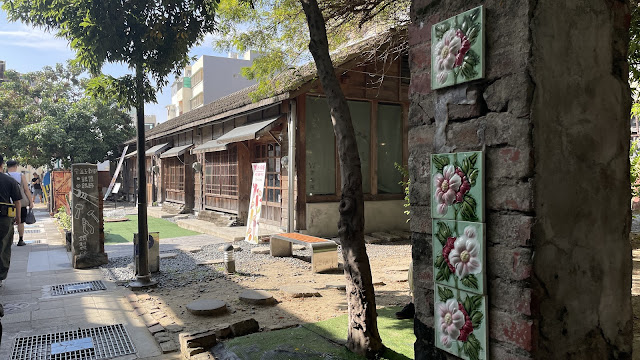About a month ago, on a random Wednesday, I met a woman by accident in the park. Our kids started playing together, and we started a conversation. I was happy to meet someone who spoke English since my Chinese is pretty basic. While I can understand much more than I can speak, it’s still a challenge to hold a proper conversation.
Honestly, it’s rare to find someone to chat with here. It’s such a contrast to when we lived in Tainan, as I knew all my neighbors, and everyone was warm and friendly. Here, it feels like I’m surrounded by rich, cold people who don’t bother to interact (sorry, not sorry).
We share some similar thoughts, which probably explains why we’ve met every Wednesday since then, chatting for two or more hours each time. I don’t have many chances to talk with anyone, so I can’t be too picky. But there’s one thing - she talks a lot about China.
At first, I wasn’t interested. But after seeing all the pictures and videos she showed me, I have to admit that China, or at least Nanjing, looks incredibly modern and convenient. She lived there for three years and constantly talks about how much she wants to go back. They moved back to Taiwan like 2-3 months ago.
I complain about Taiwan too, but she takes it to another level. She can barely find anything positive about living here. It was nice though to hear a local also complains about the traffic, the absurdly high housing prices or greedy landlords evading taxes and that nothing in here is worth it's price. She said Taiwan has stopped progressing and is stuck in the past.
I was fine listening to her talk about China until today. That’s when the conversation changed into politics, which was far more draining than hearing about China. Turns out, she’s a KMT supporter and believes the DPP is destroying Taiwan, brainwashing people into thinking China is the enemy.
Today, I barely spoke, listening for 2.5 hours, wishing I had an excuse to leave. But the kids were having a great time.
Why do I have to discuss politics in a country that isn’t even mine? Taiwan doesn’t exactly make foreigners feel welcome, as shown by the recent referendum rejecting citizenship for long-term residents. Apparently, giving foreigners citizenship is seen as a financial and security risk. Of course, that rule doesn’t apply to wealthy individuals who can bring money into the country as they can become Taiwanese without giving up their original citizenship.
The government claims Taiwan follows a strict single-citizenship policy, yet many Taiwanese hold dual citizenship because other countries don’t make it such a big deal.
For example, in Poland, if you’re married to a Polish citizen, you can apply for citizenship after just two years of living there, provided you pass a B1 Polish language proficiency test.
Nowadays, I see more and more people from diverse backgrounds - Mexican, Korean, Chinese, even African becoming Polish. I’ve come across videos of them speaking Polish, and I admire how fluent they are, often with barely any accent. It’s impressive as Polish isn't the easiest language to learn.
Meanwhile, after living here for eight years, even if I stayed until the end of my life, I’d still be considered a foreigner.
I’ve heard about people who live here for 20 or 30 years, and they’re still nothing more than foreigners.
Anyway, this was the first time I met a Taiwanese person who openly loves China so much. It is… overwhelming, to say the least.
I agree with many points about Taiwan, but there are also good things about living here. However, I can’t compare it to China because I’ve never lived there. The only comparison I can make is with Poland, and maybe that’s why our perspectives are different.
I don’t necessarily want Taiwanese citizenship - I don’t feel Taiwanese and don’t think I ever will. People here don’t make it any easier, as foreigners are rarely viewed as potential citizens. Compared to Poland, Taiwan is far less accepting of diversity. In Poland, if you have a different skin color but say you’re Polish, most people won’t question it.
It doesn’t bother me personally, since I’m not Taiwanese and don’t want to be. But for our son, who currently only has Taiwanese citizenship, it’s a different story. What’s ironic is that he’s often called a “foreigner” not just by kids but by adults too. He’s mixed, but no one seems to assume he’s Taiwanese. I often hear comments like, “Your son’s Chinese is so good!” or “He doesn’t have any accent!” I mean, why would he have an accent or struggle with Chinese? He goes to a public school like everyone else. Yes, he also speaks English and Polish, and I’m focusing more on maintaining those languages since he spends most of his day immersed in Chinese.
It’s frustrating that people here don’t seem to believe someone who doesn’t look exactly like them can be Taiwanese.
One of the biggest challenges of being a foreign parent in Taiwan is how few rights I have when it comes to my child. Whether it’s dealing with the school, the hospital, or government matters, I can’t do much without my husband. I can’t even apply for my son’s passport - yet my husband can do it with just his signature.
Think about how easy it would be for someone to kidnap a child if only one parent’s consent is needed for something as important as issuing a passport, with no requirement for the other parent’s approval. For most things related to our son, I can’t handle them on my own because both parents’ signatures are required for important documents—but when it comes to other issues, I’m often excluded entirely.
I’ve mentioned this before, but maybe some people haven’t read it, so I’ll remind you: there are many things foreigners can’t do here simply because the paperwork is considered too troublesome for the staff.
One time, we went to the bank to open an account for me. My husband called ahead to confirm what documents I needed, and the bank was fully aware that I was a foreigner and that my Chinese isn’t perfect. They didn’t seem to mind.
We spent about two hours filling out forms, signing everything, and providing all the required documents. Then, we ran into a problem. I’m not entirely sure what the issue was, but the explanation was simple: “We don’t do this for foreigners because they don’t stay long.”
The same goes for opening an online bank account - you are immediately rejected.
I mean, how does that make sense? I can’t just move out the next day. If I didn’t plan on staying here longer, why would I even bother opening a bank account?
I don’t understand why so many foreigners would want to become Taiwanese, especially when just as many, after spending a few years here, end up moving back to their home countries because of the many absurdities they encounter.
I don’t understand why so many foreigners would want to become Taiwanese, especially when just as many, after spending a few years here, end up moving back to their home countries because of the many absurdities they encounter.



































































